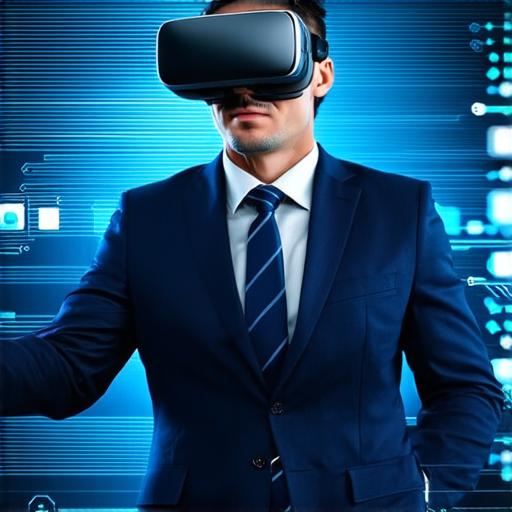Virtual reality (VR) technology has been gaining popularity in recent years, with many businesses starting to implement this immersive technology in various aspects of their operations. VR can enhance customer experiences, improve training and education, increase efficiency, and reduce costs. In this article, we will explore how virtual reality is implemented in the business sector, including its use cases and benefits.
1. Customer Experiences

One of the primary applications of virtual reality in the business world is to enhance customer experiences. Retailers and product manufacturers are using VR technology to create virtual showrooms that allow customers to visualize products in a 3D environment. This helps them make more informed purchasing decisions, reducing returns and increasing customer satisfaction.
2. Training and Education
Virtual reality can also be used for training and education purposes. Companies can create virtual simulations of work environments or real-life scenarios, allowing employees to practice their skills in a safe and controlled environment. This can help reduce the risk of workplace accidents and improve overall safety. Additionally, VR can be used in remote areas where resources are limited or inaccessible, such as training doctors in developing countries.
3. Marketing and Advertising
Virtual reality can also be used in marketing and advertising to create immersive experiences that capture the attention of consumers. For example, car manufacturers have created virtual showrooms where customers can experience different models in a 3D environment. This has led to increased customer engagement and brand loyalty.
4. Product Development
Virtual reality can also be used for product development. Companies can create virtual prototypes of products, allowing them to test and refine them before manufacturing them physically. This can help reduce production costs and improve overall quality.
5. Remote Collaboration
Virtual reality can also be used for remote collaboration, enabling employees to work together in a virtual environment regardless of their location. This can help reduce travel expenses and increase productivity by allowing teams to collaborate more efficiently.
Benefits of Virtual Reality in Business
1. Enhanced Customer Experience: Virtual reality can provide customers with immersive experiences that improve their engagement and satisfaction, leading to increased sales and brand loyalty.
2. Improved Training and Education: Virtual reality provides a safe and controlled environment for employees to practice their skills, reducing the risk of workplace accidents and improving overall safety.
3. Increased Efficiency: Virtual reality can reduce travel expenses and enable remote collaboration, leading to increased productivity and efficiency.
4. Reduced Costs: By reducing production costs and increasing efficiency, virtual reality can help businesses save money in the long run.
5. Competitive Advantage: Businesses that use virtual reality technology can gain a competitive advantage by offering unique and immersive experiences to their customers.
Conclusion
Virtual reality is becoming an increasingly popular tool for businesses in various industries. Its ability to enhance customer experiences, improve training and education, increase efficiency, and reduce costs makes it a valuable investment for any organization looking to stay ahead of the competition. As virtual reality technology continues to evolve, we can expect to see even more innovative uses of this immersive technology in the business world.



